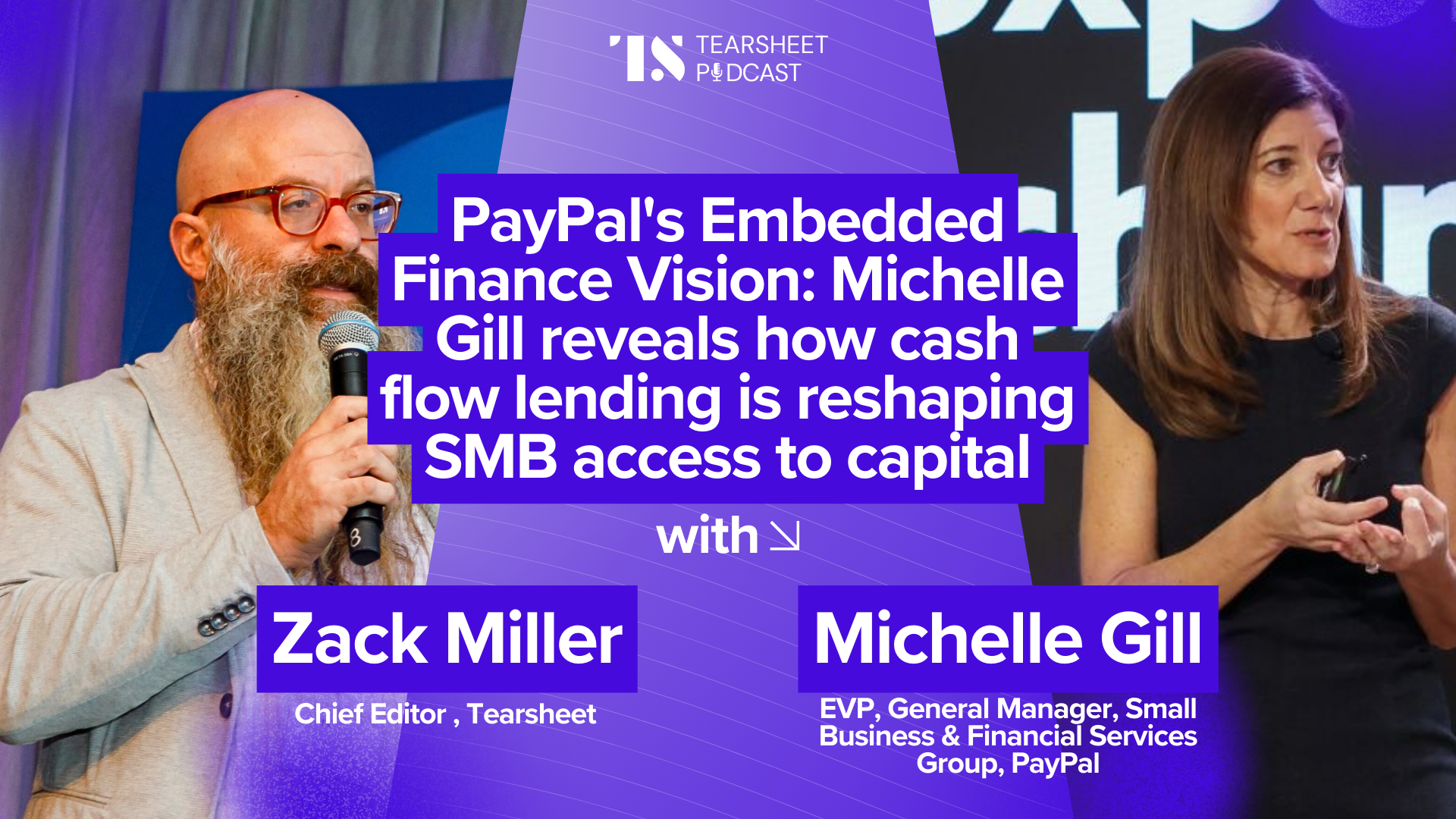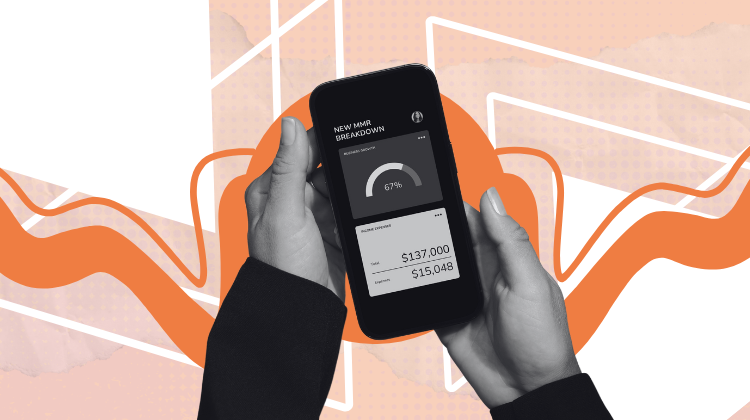As General Manager of PayPal’s Small Business and Financial Services Group, Michelle Gill is responsible for bringing together the products and services that help small business owners run and grow their business. She is my guest for this episode of the Tearsheet Podcast.
Michelle brings deep financial expertise and experience building platforms and tools that help customers manage their finances to her role on PayPal’s Senior Leadership Team. Michelle was previously Senior Vice President of Intuit’s business money management, payment, and banking service, QuickBooks Money Platform. Prior to Intuit, Michelle successfully integrated and expanded SoFi’s lending business as General Manager and Executive Vice President of Consumer Lending and Capital Markets.
Drawing on her early career experience as a Managing Director and Partner at Goldman Sachs, Michelle also served as SoFi’s Chief Financial Officer before moving into the product leadership role. Before that, Michelle spent a decade leading the U.S. Assets business for global investment firm Sixth Street Partners.
Given her career and experiences, Michelle brings a broad view of fintech innovation. She focuses on user-centered solutions. At PayPal, she leads efforts to help entrepreneurs navigate the complicated web of financial tools they often depend on.
“The preponderance of [small businesses] use greater than 15 tools to run their business,” she shares. “What they got into business for is the passion… and yet they end up spending more time on things that are not what they love.”
Our conversation explores how PayPal is actively trying to reduce that complexity. It does so not by offering more tools, but by making the ones they already use work better together. Gill outlines the strategy behind PayPal’s cash flow-based lending model and how it fits within their open ecosystem, whether it’s digital lending, embedded finance, or leveraging open banking.
Listen to the full episode
Subscribe: Apple Podcasts I SoundCloud I Spotify
Watch the full episode
How PayPal for Small Business solutions addresses complexity
For many small business owners, managing finances often means juggling over a dozen platforms. PayPal is stepping into this chaos with the goal of integration. “It’s not the adoption of the new tool in and of itself that’s the problem. It’s how it feeds back into your broader ecosystem,” says Gill. PayPal’s strategy focuses on streamlining tools through a single integration. It aims to reduce friction and give entrepreneurs more time to focus on their craft.
How PayPal cash flow lending works
PayPal’s approach to cash flow-based lending matches repayments with earnings. It is unlike traditional fixed-schedule lending. “Repayment is predicated on the receipt of those earnings,” says Gill. She describes the flexibility of the PayPal Working Capital product. This flexibility makes the loan more manageable for merchants with fluctuating revenue.
But, until recently, merchants couldn’t access more funds until fully repaid the loan. That’s changing. “We are changing our product to allow for the ability to redraw,” she notes. She signals towards an update that will help entrepreneurs recycle capital more efficiently.
Leveraging Open Banking for better lending models
Previously, PayPal could only lend based on what it processed. But open banking now enables them to assess a holistic view of merchant cash flow. “We now can have visibility into the entire merchant account, both on and off PayPal,” says Gill. This broader perspective supports more accurate underwriting. It offers larger loan sizes without expanding the credit risk.
PayPal is embedding finance into merchant workflows
PayPal isn’t just offering loans—they’re embedding them into the workflows merchants already use. Through the PayPal dashboard, users are notified of pre-approved loan amounts as they manage daily tasks. These are like refunds and chargebacks. “We are planning to add the amount that merchants have been pre-approved for, so they know going in,” Gill shares. PayPal is also collaborating with vertical SaaS providers, as well as with marketplaces, to bring financing directly into partner platforms.
Growing with merchants in the Open PayPal ecosystem
Through its open ecosystem, PayPal aims to grow alongside its customers. “We do things from point of sale to lending to online payments for e-commerce… we’ve tried to grow with our customers as they’ve grown,” says Gill. That includes helping businesses navigate newer challenges, like Generative AI and complex commerce models. “We do that through education, tools, and end-to-end services,” she adds.
The Big Ideas
- Small Businesses Face Tool Overload. “The preponderance of them use more than 15 tools to run their business.” This overload creates inefficiencies—PayPal’s integrated platform is intended to reduce that friction.
- Cash Flow Lending Matches Business Realities. “Repayment is predicated on the receipt of those earnings.” This model reflects how small businesses operate, especially in unpredictable markets.
- Access to Capital Expands with Open Banking. “We now have visibility into the entire merchant account… not only borrow against your PayPal receivables, but also your off-US receivables.” This broader access supports more accurate and inclusive lending.
- Embedded Finance Increases Accessibility. “Merchants who use PayPal come into their dashboard generally at least once a week… We let them know they have access to capital.” In-app lending notifications simplify the financing journey.
- Loyalty Grows with Product Adoption. “If you borrow once from us, you tend to borrow five or six times.” This repeated usage signals that the lending tools are resonating with merchants.










